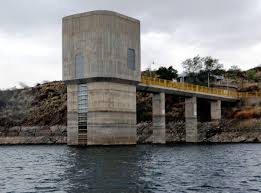
Electricity regulator adjusts NamPower bulk tariffs by 8%

By Michel Haoses.
The Electricity Control Board (ECB) after deliberations on the NamPower bulk tariff application for a 14.59 % increase resolved to adjust the NamPower bulk tariff by 8% which changes the approved rate of N$1.9856 per kWh to N$2.1444 per kWh effective 01 July to June 2025.
ECB Chief Executive, Robert Kahimise announced the increase on 26 April.
Consequently, due to the tariff increases above the current inflation rate of 4.5% (March), it is expected that the tariff adjustment will put pressure on future inflation therefore on the prices of goods and services.
According to Kahimise, the primary factor considered in the tariff adjustment is the rise in electricity cost generation as the expense associated with importing electricity is approximately 42% of generation cost and it is denominated in US$ currency making currency fluctuations directly impact generation tariff.
Additionally, NamPower earns revenue based on the approved budgeted cost, volumes, and approved tariff whereas in practice actual cost and revenues vary resulting in annual over or under-recovery of the required revenue.
Electricity generation is relatively cheap at Ruacana Power Plant but the plant generated lower than what was projected resulting in energy being replaced by expensive alternatives or imports at higher cost.
Although performance is dependent on the Kunene River, it is reported that water flow at Ruacana looks promising therefore projected that for the 2024/2025 period, 45% of the national demand will be supplied by local generation and 55% by regional imports
Regarding the issue of possible power shortages Kahimise in his statement revealed that the Namibian Government through the Ministry of Mines and Energy and relevant government agencies working to ensure improved security of electricity supply in Namibia.
Moreover, to mitigate possible power shortages NamPower is implementing several electricity projects of which two are to be commissioned during 2024 namely; Anixas II and Khan Solar PV four plants are currently operational and established under the Modified Single Buyer Model and an expected 50MW will be commissioned during the 2024/2025 generating more electricity locally.
The bulk electricity tariff will apply to NamPower bulk customers including Regional Electricity Distributors (RED), Local Authorities, Regional Councils, and large industrial transmissions such as mines and they will have to individually apply to ECB for a review of their distribution tariff on or before 31 May as failure to do so may result in them selling electricity based on outdated tariffs while purchasing on new tariffs.
The decision to adjust NamPower bulk tariff to 8% was made under the tariff regulatory tools and the engagement and interrogation of NamPower’s application with stakeholders including agricultural unions, business and employer federations and associations, mining chamber, ratepayers associations, Independent Power Producers (IPPs), renewable energy associations, government ministries agencies, and electricity distributors.
 From left to right: Executive Economic and Market Regulation; Pinehas Mutota, Chief Executive of Electricity Control Board; Robert Kahimise and Executive Technical Regulation Petrus Johannes. (Photograph by Michel Haoses).
From left to right: Executive Economic and Market Regulation; Pinehas Mutota, Chief Executive of Electricity Control Board; Robert Kahimise and Executive Technical Regulation Petrus Johannes. (Photograph by Michel Haoses).











































